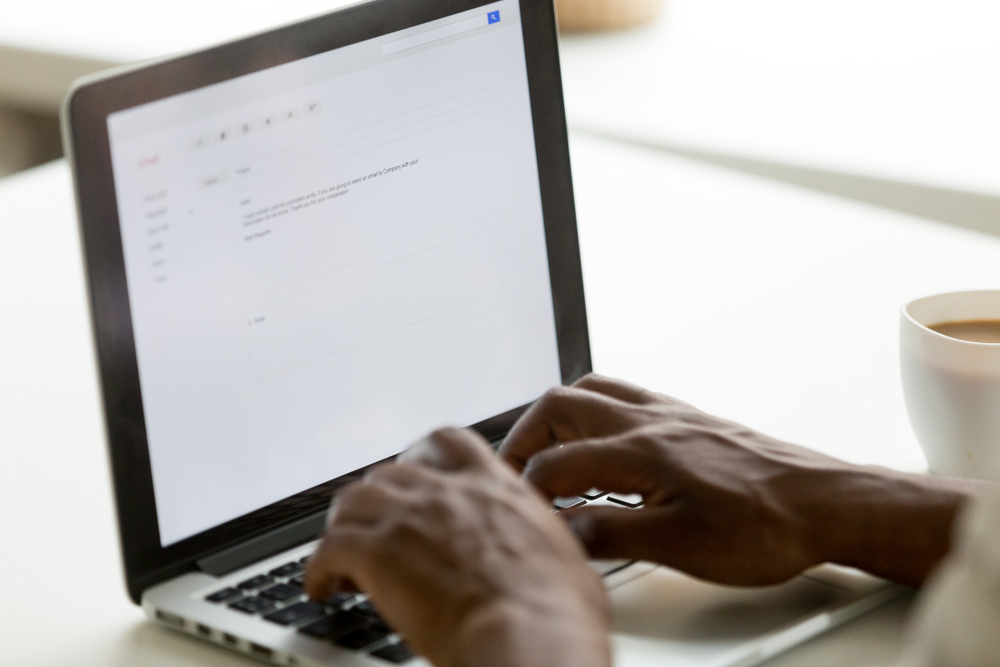

Whether you want to reach out to the potential clients or ask the existing one for referral or payment, email has been a core of business communication.
But email is a double-edged sword. Whereas it can convince people to subscribe to your services or shop your products, it can lead to sheer confusion if done incorrectly.
In one survey, over 60% of professionals admitted that emails caused confusion, tension, and other negative results.
That’s why it is quite tricky to create an email that can look convincing, clear, and respectful.
Luckily, that’s not rocket science. All you need to avoid silly mistakes as well as work over its clarity and tone.
And these DON’Ts and DOs will help you meet both purposes.
DON’T: Over-communicate Through Emails:
Not everything can be shared through email. For example, if you need to have some back-and-forth discussion with clients, choose call, messenger, or WhatsApp chat over emails. Otherwise, the email will create an unnecessary trail of “questions and answers” and create confusion for sure.
From colleague issues to troubleshooting with the clients, opting for the offline conversation (if possible) and using other communication channels can be the practical solutions to deal with the issues at hand.
DO: Check Your Subject Line:
The subject line is the most crucial part of the email. After all, it tells the readers what the email contains. But it is often overlooked. Make sure to keep your subject line convincing so that people feel encouraged to open your email.
There is no use of casual subject lines such as “Hello” and “Don’t Miss This” as it can irritate the receiving person, sending your email in the spam folder.
Here is an example of two subject lines while approaching potential clients:
Subject Line 1:
Great Opportunity!
Subject Line 2:
Sam, Are You Ready to Get Excited?
Subject Line 2 is better as it gives complete information as well as personalized. Subject Line 1 is not personalized; it lacks details and sounds like a traditional spam mail.
Likewise, an invitation to the meeting can look better with Subject Line 2 than Subject Line 1.
Subject Line 1:
Meeting
Subject Line 2:
Digital Marketing Meeting—11 A.M. February 1, 2021
DON’T: Use Humor
Using humor and sarcasm can work for your personal emails exchanged between your near and dear ones. But it can backfire in the case of corporate emails. The receivers can easily misinterpret them. Adding sarcasm and humor to your emails can make clients offended and confused. The rule is simple: write plain and clear email avoiding humor and sarcasm. Neither use slangs and terms like LOL.
DO: Proofread Your Emails:
Before hitting “SEND,” make sure to check your email for misspelled words and grammatical errors. Otherwise, a client might perceive you careless, casual, and even uneducated. Always check your emails manually as well as using tools like Grammarly.
DON’T: Use Jargons or Highly Technical Words:
This is the area where we all should be careful. Not all clients are technical and might not understand the words like Buyer Persona, Schema, Site Map, PPC, and Crawling. That’s why it is essential to use layman’s words in your emails and minimize technical terms. For example, a buyer persona can be replaced with “the characteristics and buying habits of your potential customers.”
DO: Keep Message Clear and To the Point:
A lengthy email body can be boring and exhaustive, no matter how important details it contains.
The point is here that the email should be clear and brief, including only essential things. If you ask for a payment, tell them that you have included the invoice and how you want to be paid in a polite tone. If you have to communicate on multiple topics, try to create a separate email for each one. This will make your message clear and lets your recipient reply to one email at a time.
Anything that needs a lot of explanation and can exceed many pages should be sent as an attachment with the email.
DON’T: Use Inappropriate Phrases:
- Avoid using “To whom it may concern” or “Dear Valued Client.” Instead, personalize the email using “Hello David, Hey Willey, Hi John.”
- Avoid using “It looks like error was made on our end.” Instead, use “We’ve made a mistake.”
- Avoid using “I can’t help you with this problem.” Instead, use “Let me know how I can help you with that.”
- Avoid using “Sincerely.” Instead, use Thanks, Cheers, All the Best.
DO: Use the Conversation Closer:
Let the client know that when the response is required and when it is not needed. There is no need to build the trails of unnecessary emails. If there is no reply required, close it with “if this looks satisfying, then no reply is needed.” Or “I can call you at 9.30 AM.” The other phrases to close the conversations are “See you at the meeting Wednesday” or “Let me know if you need any assistance.”
DON’T: Use a Negative or Angry Tone
It is a common thing to have differences or disagreements with clients. A client might resort to the negative tone, but you shouldn’t lose your cool. Always keep a positive tone in your messages. If you feel that an email’s tone can be mistaken, have a face-to-face meeting or communication over the phone with them. And don’t create an email when you are not in a good mood as your emotions can be reflected in words.
DO: Keep it Personalized:
While you should avoid slang and humor, keeping a bit informal yet polite tone can make your message personalized to the client. For example, you don’t need to use too formal salutations like “Dear Sir” or “Respected Marry.”
Instead, use “Hey John” or “Hello Marry.”
So, these are some simple tips to write an effective email to clients. All you need to keep your message clear, simple, and personalized. What do you think? Drop your valuable opinions to the comment box given below.

Started working as a digital marketing expert, Varun Sharma is now also a well-known digital marketing speaker – a speaker on performance development, and a trusted mentor to businesses in the digital world. His keynote expositions are based on the digital marketing theories, which provide a fascinating insight into the secrets of high performance.

